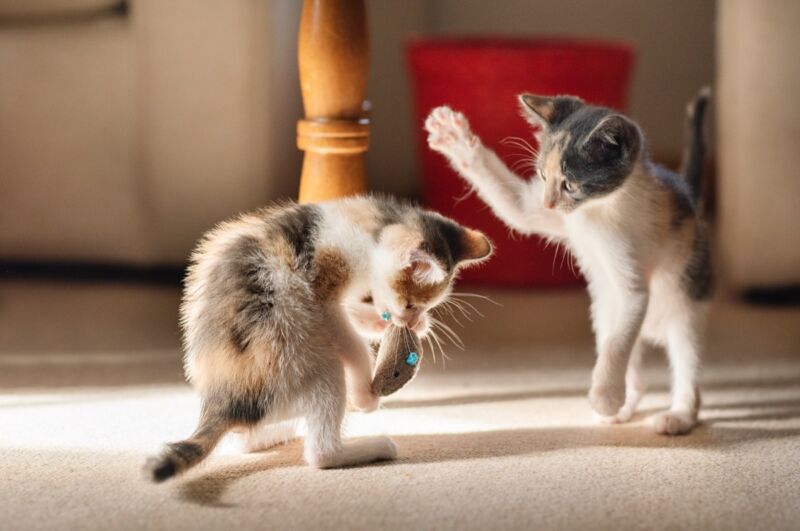How to tell if your cats are playing or fighting—and whether it’s a problem

Enlarge / Kittens engage more frequently in reciprocal wrestling ("play-fighting") compared to adult cats, a new study found. (credit: Getty Images)
Anyone with more than one cat in the house knows that the occasional spat or outright cat fight is going to happen. But sometimes it can be tricky to determine whether cats are fighting or just playing rough, because the interaction could feature trademark behaviors of both, according to a recent paper published in the journal Scientific Reports. It's even more challenging to tell whether the fight is just a squabble or a sign that the cats simply can't get along, thereby forcing hard decisions about how to separate the cats-or even whether it's possible to keep the cat(s) in question.
In 2021, co-author Noema GajdoKmecova, a veterinarian with the University of Veterinary Medicine and Pharmacy in Koice, Slovakia, and several colleagues published a review paper proposing the development of a common terminology and more of a "psychobiological" approach to the study of cat behavior-particularly when it comes to play behavior. Past studies had focused on a cat's play activity, such as whether it was playing with a toy or another cat. But such observation yields little insight into the function of such play and, by extension, a cat's motives or emotional state.
"When one cat treats another as an object or prey, such activity relates to the former cat seeking to learn about its own skills in relation to manipulating its physical environment (prey are not considered part of the complex social relationships and thus social environment of an individual)," they wrote in that paper. "However, when interaction between cats is reciprocal it may function to facilitate social learning and may be best described as mutual social play." Because such interactions are dynamic, they argued that any functional classification system must be flexible enough to account for such nuances.